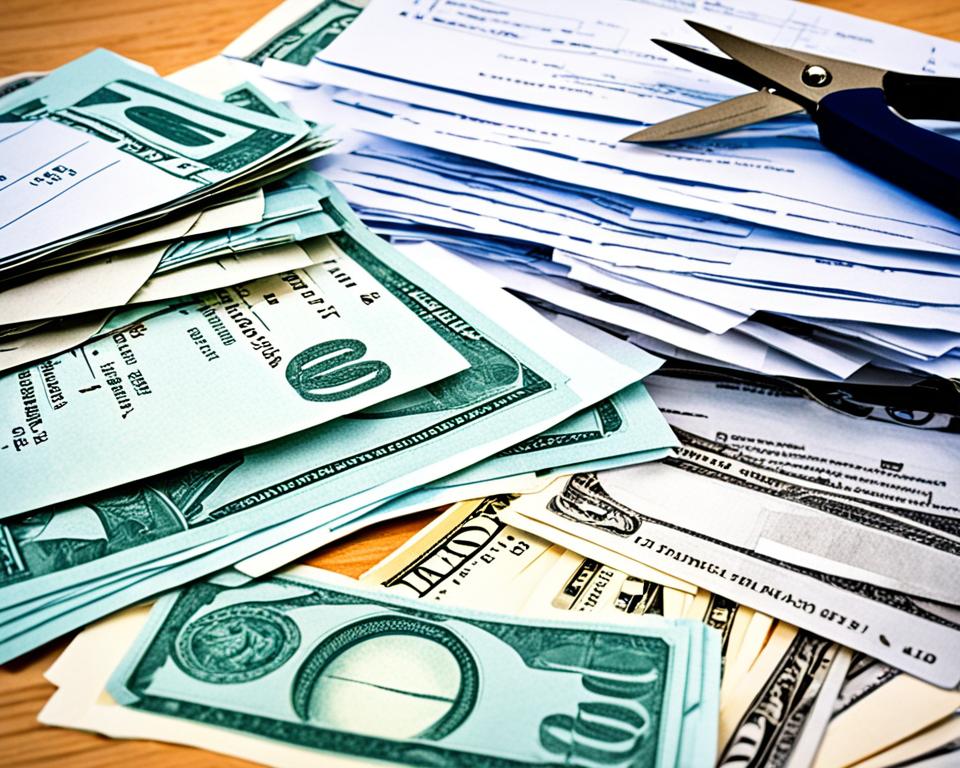6 Essential Elements to Include in Your Personal Finance Statement for Effective Money Management
Are you struggling to effectively manage your finances? Look no further! In this article, we will discuss the six essential elements that you must include in your personal finance statement to improve your money management skills.
Whether you are a beginner or have been dealing with finances for years, these tips will help you take control of your financial well-being.
By including these essential elements in your personal finance statement, you will create a comprehensive overview of your income, expenses, assets, liabilities, goals, and budget. Not only will this provide you with a clear picture of your current financial situation, but it will also allow you to make informed decisions about how to allocate your resources and achieve your financial goals.
So, if you want to take control of your finances and achieve financial stability, stay tuned! We will guide you through the six crucial elements of a personal finance statement that will revolutionize the way you manage your money.
Remember, effective money management starts with a well-structured personal finance statement. Let’s dive in and transform the way you handle your finances!
The importance of personal finance statements
Before we delve into the essential elements of a personal finance statement, let’s first understand why it is crucial to have one. A personal finance statement provides a snapshot of your financial health. It helps you track your income, expenses, assets, liabilities, and net worth. With this information at your fingertips, you can make informed decisions about your financial future.
Having a personal finance statement allows you to analyze your spending habits, identify areas where you can save money, and set financial goals. It provides clarity and enables you to prioritize your financial commitments. Whether you want to save for a down payment on a house, pay off debt, or plan for retirement, a personal finance statement is the foundation on which you can build your financial success.
To create an effective personal finance statement, you need to include key elements that will provide a comprehensive overview of your financial situation. Let’s explore these essential elements in detail.
Key elements of a personal finance statement
Income and Expenses
The first crucial element to include in your personal finance statement is a breakdown of your income and expenses. Start by listing all sources of income, including salaries, bonuses, rental income, and investments. Be sure to include both regular and irregular income sources.
Next, categorize your expenses into essential and non-essential items. Essential expenses include rent/mortgage, utilities, groceries, transportation, and healthcare. Non-essential expenses may include dining out, entertainment, and subscription services. It’s important to be thorough and capture all expenses to get an accurate picture of your spending habits.
Once you have your income and expenses listed, calculate your disposable income by subtracting your expenses from your income. This will give you a clear understanding of how much money you have left after covering your essential expenses.
Assets and Liabilities
The second essential element of a personal finance statement is an inventory of your assets and liabilities. Assets are anything of value that you own, such as cash, investments, real estate, vehicles, and valuable possessions. Liabilities, on the other hand, are your debts and financial obligations, such as credit card debt, student loans, and mortgages. You should be also using a budgeting planner.
List all your assets and their corresponding values. This will help you determine your net worth, which is the difference between your assets and liabilities. Calculating your net worth provides a holistic view of your financial standing and serves as a benchmark to track your progress over time.
Net Worth Calculation
Your net worth is a crucial indicator of your financial health. It measures your overall wealth and helps you assess your progress towards your financial goals. To calculate your net worth, subtract your total liabilities from your total assets. A positive net worth indicates that you have more assets than liabilities, while a negative net worth signifies that you have more debts than assets.
Tracking your net worth over time allows you to monitor your financial growth and make adjustments to your financial strategies as needed. It also helps you identify areas for improvement and motivates you to take steps towards increasing your net worth.
Tracking Financial Goals and Progress
Setting financial goals is an important aspect of effective money management. Your personal finance statement should include a section where you can track your financial goals and monitor your progress. Start by identifying your short-term and long-term financial objectives, such as saving for a vacation, buying a house, or retiring comfortably.
Once you have set your goals, break them down into smaller, achievable targets. For example, if your goal is to save $10,000 for a down payment on a house in two years, you can set a monthly savings target of $417. Tracking your progress towards these targets will keep you motivated and focused on achieving your financial goals.
Using Personal Finance Software or Apps
In today’s digital age, there are numerous personal finance software and apps available to help you manage your finances effectively. These tools can simplify the process of creating and maintaining your personal finance statement. They offer features such as expense tracking, budgeting, goal setting, and financial reporting.
Consider using personal finance software or apps to automate the process of tracking your income and expenses, categorizing transactions, and generating financial reports. This can save you time and ensure accuracy in your financial record-keeping. Choose a tool that aligns with your needs and preferences, and take advantage of the features it offers to streamline your money management.
Regularly Updating and Reviewing Your Personal Finance Statement
Lastly, it is crucial to update and review your personal finance statement regularly. Your financial situation is dynamic, and changes can occur frequently. By updating your statement on a regular basis, you will have an up-to-date view of your finances and can make informed decisions based on accurate information.
Set a schedule to review your personal finance statement at least once a month. Use this time to analyze your spending patterns, reassess your financial goals, and make adjustments to your budget if needed. Regularly reviewing your statement will help you stay on track and ensure that you are making progress towards your financial objectives.
Income and expenses
In conclusion, a well-structured personal finance statement is essential for effective money management. It provides a comprehensive overview of your income, expenses, assets, liabilities, goals, and budget. By including these key elements in your personal finance statement, you can gain clarity about your financial situation, make informed decisions, and work towards achieving your financial goals.
Remember, taking control of your finances starts with understanding your financial position. By regularly updating and reviewing your personal finance statement, utilizing personal finance software or apps, and tracking your progress towards your financial goals, you can pave the way for financial stability and success. So, start implementing these essential elements today and transform the way you handle your finances!
Using personal finance software or apps
The fourth element to include in your personal finance statement is a section dedicated to tracking your financial goals and progress. Setting financial goals is essential for effective money management, as it provides you with a roadmap for achieving your desired financial outcomes. By including a section in your personal finance statement where you can record your goals and track your progress, you can stay motivated and focused on your financial journey.
Start by setting specific and achievable financial goals. These goals can be short-term, such as paying off a credit card debt within six months, or long-term, such as saving for retirement. Make sure your goals are measurable and time-bound, as this will help you stay accountable and track your progress. Once you have set your goals, record them in your personal finance statement and regularly update them as you make progress.
To track your progress, it’s essential to break down your goals into smaller milestones. For example, if your goal is to save $10,000 for a down payment on a house within two years, break it down into monthly or quarterly savings targets. By tracking your progress regularly, you can ensure that you are staying on track and making the necessary adjustments to achieve your goals.
In addition to tracking your progress, it’s also crucial to celebrate your achievements along the way. Whether it’s paying off a debt, reaching a savings milestone, or achieving a specific investment target, take the time to acknowledge your accomplishments. This will not only boost your motivation but also reinforce positive financial habits.
In summary, tracking your financial goals and progress is a vital element to include in your personal finance statement. By setting clear goals, tracking your progress, and celebrating your achievements, you can stay motivated and focused on achieving your desired financial outcomes.
Regularly updating and reviewing your personal finance statement
The fifth element to include in your personal finance statement is the use of personal finance software or apps. In today’s digital age, there are numerous tools available that can help you manage your finances more effectively. By incorporating personal finance software or apps into your money management routine, you can streamline your financial processes and gain valuable insights into your spending habits.
Personal finance software or apps offer a range of features that can simplify your financial management. These tools allow you to sync your bank accounts, credit cards, and other financial accounts, providing you with a real-time overview of your financial transactions. They also offer budgeting and expense tracking features, helping you stay on top of your spending and identify areas where you can save money. Additionally, many personal finance tools provide investment tracking, debt management, and goal-setting features, allowing you to manage all aspects of your finances in one place.
When choosing personal finance software or apps, consider your specific needs and preferences. Some popular options include Mint, Personal Capital, YNAB (You Need a Budget), and Quicken. Take the time to explore different tools and find one that aligns with your financial goals and provides a user-friendly interface.
In summary, incorporating personal finance software or apps into your money management routine is an essential element to include in your personal finance statement. By utilizing these tools, you can streamline your financial processes, gain valuable insights into your spending habits, and make informed decisions about your financial future.





